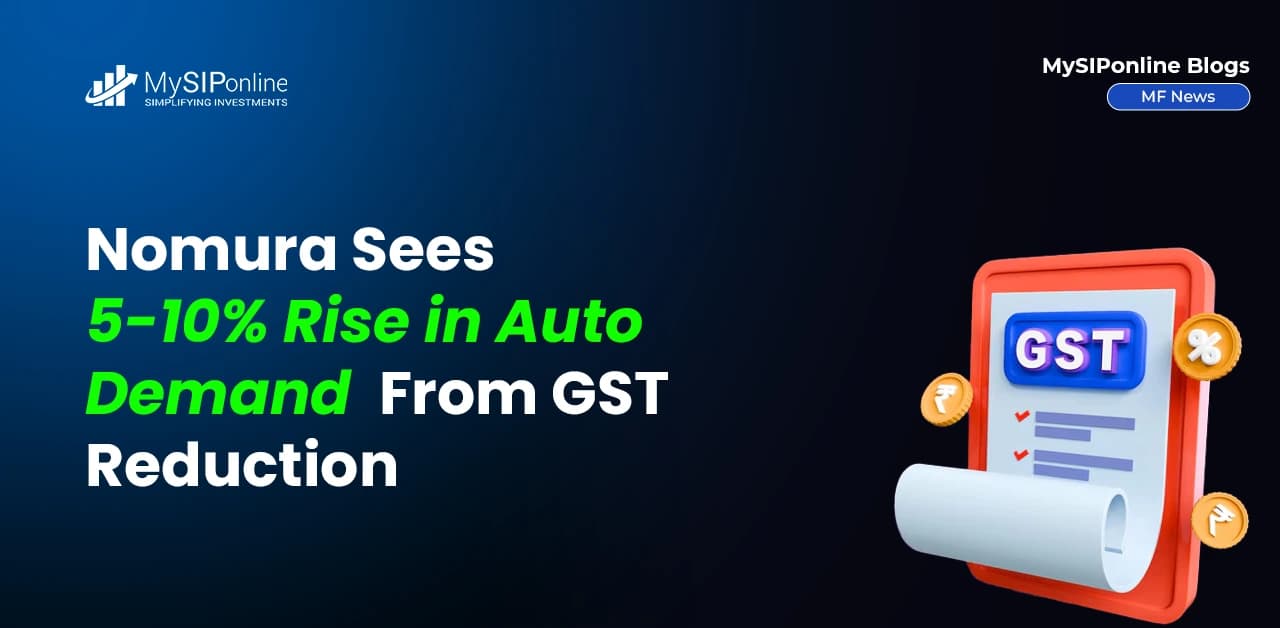According to the reports, the government may soon rationalize the GST (Goods and Services Tax) rates on automobiles. The auto sector is reviving for a potential game-changing policy move.
Noruma says that cutting the GST rate could cause an upside for the sector. The biggest beneficiaries of this sector rise will be passenger vehicle majors, including Maruti Suzuki, Mahindra & Mahindra (M&M), Ashok Leyland, and TVS Motor.
Currently, the automobile sector falls under the highest GST slab, with tax rate depending on size and features. Under the proposed shift, the GST rate on small cars and two-wheelers could fall to 18% from 28% and rates on larger cars may drop to around 40% from 43-50%. However, GST for motorcycles above 350cc may increase, with tax rates possibly rising from 31% to 40%.
Also Read: How Much GST on Gold is Charged in India? 2025 Update
Due to the estimation of GST reduction having a multiplier effect of 1-1.5x, which translates into a 5-10% rise in demand across segments by Noruma, popular models are likely to witness strong price cuts, including WagonR by around 9%, Bolero by 10%, XUV700 by 7%, and Brezza and Creta by 3%. The vehicle models like Maruti Suzuki (with almost 68% of its portfolio falling under the small car category) and M&M (with 52% exposure, including LCVs) tend to gain the most. With sales reportedly slowing down in anticipation of a tax cut, the immediate sentiment in the market has been cautious.
Nomura noted that the GST cut would be more beneficial for four-wheeler OEMs than two-wheeler makers. Two-wheeler OEMs are also facing challenges from rising costs due to the upcoming ABS mandate, which could eat away almost half of their GST benefits (₹3,000–4,000 per vehicle). But, interestingly, Eicher Motors, with its Royal Enfield portfolio already ABS-compliant, may emerge as a relative beneficiary within the two-wheeler segment.
Across the board, with OEMs having higher domestic exposure positioned to gain the most, auto manufacturers could see margin improvements of 100–150 bps. The demand upswing could translate into higher volumes and stronger pricing power in the aftermarket segment, for auto component suppliers such as Uno Minda, Samvardhana Motherson, and Sansera Engineering. As rising vehicle sales improve order books across the value chain, domestic suppliers will specifically benefit.
Must Read: What is Tax Planning: Objectives, Types & Importance
But not all segments may benefit equally from this. A GST cut on ICE vehicles could increase the price gap between ICE and EV models, turning sentiment negative for electric vehicles (EVs). Nomura warns that unless the government simultaneously introduces demand incentives specifically for EVs, this move could delay EV adoption in India by 2–3 years.
The revenue implications for the government are sizeable. A GST cut could lead to an annual revenue loss of Rs 74,000 crore. However, assuming a 10% boost in vehicle volumes, the net impact may reduce to approximately Rs 54,000 crore, suggesting that higher demand could partially offset the fiscal hit.
Related Blogs:
1. Tax Planning For Salaried Employees: Best Tax Saving Options
2. How To Calculate Income Tax On Salary With Example: Unfolded








.webp&w=3840&q=75)

.webp&w=3840&q=75)


